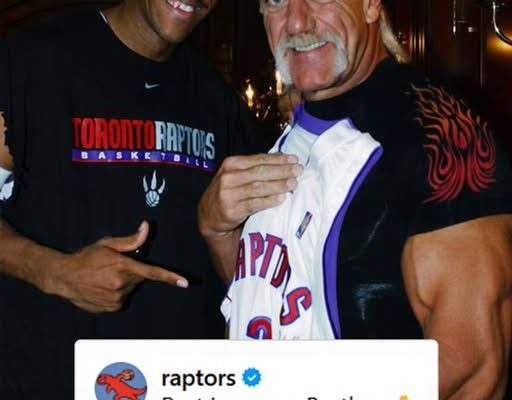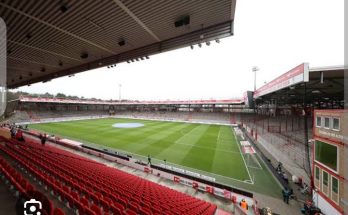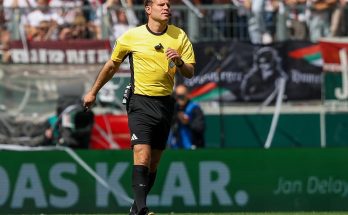In an unexpected and heartfelt moment that bridged the gap between sports and entertainment, the Toronto Raptors took a rare detour from the hardwood spotlight to pay their respects to one of professional wrestling’s most iconic and polarizing figures: Hulk Hogan. The gesture sent ripples across both the NBA and WWE communities, creating a wave of nostalgia, reverence, and reflection on a legacy that transcends the wrestling ring and spills into pop culture, global influence, and cross-generational recognition.
Hulk Hogan, born Terry Gene Bollea, is a name that resonates with anyone remotely familiar with professional wrestling, especially during its golden boom period in the 1980s and early 1990s. The unmistakable blonde handlebar mustache, the red-and-yellow color palette, the iconic “Real American” entrance music, and the muscular silhouette tearing through T-shirts defined an era. Hogan wasn’t just a wrestler; he was a symbol of American bravado and charisma. His catchphrases—“Whatcha gonna do, brother?” and “Say your prayers and eat your vitamins”—weren’t just slogans; they were battle cries that lit up arenas and inspired millions.
So why would the Toronto Raptors, a team based in Canada with no formal ties to wrestling, take the time to acknowledge someone like Hulk Hogan? The answer lies in the broader canvas of cultural intersection. Sports teams today are not siloed in their own identities. They are part of a larger entertainment ecosystem, constantly interacting with music, movies, television, and yes, wrestling. In recognizing Hogan, the Raptors were tipping their hat to a man who helped shape the entertainment world as we know it.
The tribute came during a Raptors home game at Scotiabank Arena, where fans were surprised with a pre-game montage celebrating Hogan’s career. Set to his signature anthem, the video featured career highlights ranging from his first WWE title win in 1984 against The Iron Sheik to his heel turn in WCW’s New World Order, and even clips from his cameo appearances in movies and television shows. It was a comprehensive visual timeline of a man who, at his peak, was perhaps as recognizable as Michael Jordan or Muhammad Ali.
As the crowd cheered, the Raptors players wore customized warm-up shirts emblazoned with Hogan’s signature “Hulkamania” logo. The team’s mascot, The Raptor, got in on the action by donning a blonde wig, fake mustache, and signature ripped tank top, parodying Hogan’s iconic look. Even the arena announcer mimicked Hogan’s raspy delivery, calling out players’ names with a Hulkster twist, eliciting laughs and applause from the crowd. It was a moment of light-hearted tribute, yet filled with genuine sentiment.
Though some younger fans may not have fully understood the weight of the gesture, older fans—many of whom grew up in the 1980s and ’90s—certainly did. Social media buzzed with clips and fan reactions. One fan tweeted, “Never thought I’d see the Raptors salute Hulk Hogan, but as a lifelong wrestling fan, I’m here for it.” Another wrote, “Sports, wrestling, nostalgia—all in one night. Thank you, Raptors. That was special.”
Behind the scenes, Raptors executives explained that the tribute was long in the making. Team president Masai Ujiri, known for his global vision, has always advocated for blending sport with culture to foster community connection. Hogan’s career, with its peaks and valleys, resonated with many on the Raptors staff, especially given the wrestler’s own public battles and redemption arcs. While controversial at times—most notably due to racial remarks that led to a temporary distancing from the WWE—Hogan’s journey has also been one of public apology, reconciliation, and gradual reacceptance.
The Raptors’ tribute was not without its critics. A small contingent of fans voiced concerns over honoring a figure with such a checkered recent past. To them, celebrating Hogan sends a complex message. However, the Raptors made it clear that the event was about honoring a cultural icon’s contributions to the world of sports entertainment, and not endorsing every facet of his personal history.
The moment also shined a light on how the Raptors have long embraced cultural crossover. They were one of the first NBA teams to fully lean into the musical influences of their city, especially during the rise of hip-hop star Drake, who serves as the team’s global ambassador. The Raptors’ ability to bridge the gap between sport and culture has been a defining trait of the franchise, and honoring Hulk Hogan fits within that broader strategy of celebrating global figures who shaped different aspects of popular culture.
Interestingly, the tribute also sparked conversations among Raptors players, many of whom grew up during wrestling’s “Attitude Era” or even the later “Ruthless Aggression” period. Veteran guard Garrett Temple shared after the game, “I grew up watching Hogan with my brothers. He was our Superman before we even knew who Superman was.” Others, like Scottie Barnes, admitted they only knew about Hogan through clips and older family members, but appreciated the fanfare and understood the magnitude of what he represented.
What perhaps stood out most during the night was the sense of unity it brought. Whether a fan of basketball or wrestling—or both—those in attendance experienced a moment that blended nostalgia with community. It was more than a gimmick; it was a reminder of how sports, regardless of the discipline, can unite people in shared emotion and collective memory. Hulk Hogan’s presence, even if only via a video montage and character imitations, turned the Raptors’ home game into a celebration of broader cultural roots.



